We have all struggled with acne at some point in our lives- whether it was a passing phase in your teenage years, a rare occurrence before all your birthday parties, or a chronic struggle that has followed you well into adulthood, every person has been a victim of this culprit. Acne, according to the Oxford English Dictionary, is defined as the occurrence of inflamed or infected sebaceous glands in the skin, particularly characterized by red pimples. The skin condition affects up to 50 million Americans every year, and can sneak up on individuals at any time in their lives. Although most common between the ages of 12 and 24, many older adults also face the challenges of coping with acne.
How Did I Get Acne?
Truthfully, nobody can completely control the onset or long-term treatment of acne. It is a natural and very common occurrence that shows itself in the form of pimples, cysts, whiteheads, blackheads, and nodules. The cause of acne lies in our pores. In humans, the pores upon our skin are connected to oil glands by follicles, which are tiny sacs that generate and release an oily liquid known as sebum. Inside sebum lies dead skin cells that are transported to the surface of the skin by traveling within follicles. From these follicles, small hairs emerge, but sometimes, these follicles are blocked by the sebum. When congestion occurs within follicles, oil accumulates below the surface of the skin and eventually may result in a clump of skin cells, hair, and sebum. This mass attracts bacteria, which enters the skin and results in inflammation. This inflammatory response, in turn, is what we know as the dreaded pimple. Although varying in size and contents, all pimples have one thing in common: they are unpredicted and unwelcomed. However, treatments and preventive measures are out there, so everybody can take steps to minimize their risks.
Types of Acne:
- Comedones: these include blackheads and whiteheads and result from the growth of bacteria in clogged follicles, without noticeable swelling
- Pimples: also known as inflammatory acne or cystic acne, pimples are caused by the response of your immune system to clogged, infected cells. When the wall of a pore or hair follicle is broken, bacteria and oil leaks into the skin. Minor pimples are caused by these ruptures occurring close to the surface of the skin, while more painful kinds of cystic acne, like cysts, are caused by fractures deeper in the epidermis.
- Papules: these red or pink bumps can vary in size but are generally less than half an inch. Within these domes lie bacteria, oil, and white blood cells, but no liquids or pus. Dead skin cells trap oil and bacteria within pores that may swell only very little due to the immune system’s reaction of sending in white blood cells.
- Pustules: these are the same as papules except they are composed of a collection of dead white blood cells, known as pus.
What Factors Increase My Risk?
There is no one scientifically proven factor that guarantees the onset of acne; however, many studies in the field have found hormones and the excess presence of bacteria to be the top two culprits in causing the onset of acne in the majority of individuals.
Hormones
Hormones, or chemical messengers in the body that exist in the endocrine glands, play a very large role in acne formation. Dermatologist Dr. Whitney Bowe explains, “when a woman’s androgen [male sex hormone] receptors are particularly sensitive, these hormones can trigger excess oil production and cause skin cells to become sticky, leading to clogged pores and breakouts.” This is often why pubescent males and females are disproportionately affected by acne, as they are experiencing heavy spikes in androgen levels during that period. Hormones do not directly cause acne. The formation and reason for acne, discussed above, is truly the party held responsible. However, it is vital to recognize that hormonal factors may increase certain individual’s susceptibility to this process of inflammation caused by high oil levels and pore clogging.
Bacteria
When follicles are clogged, they serve as perfect environments for prokaryotic organisms to manifest. Specifically, bacteria often invades these regions. This leads to the brain altering the immune system that pathogens are present, triggering the release of white blood cells to the infected area. Thus, the region also swells up, as inflammation is a common bodily response to infection.
What Exactly is High Frequency Therapy?
![]()
The use of high-frequency currents was originally discovered by scientist and engineer Nikola Tesla in the 1800s. During this time, the development of this alternating current was primarily used in medicine as an antibacterial treatment for diseases like strep throat infections. Its benefits were highly reaped in the 1800s and further into the future. Europeans began utilizing high-frequency technology upon finding out its efficacy in improving skin care. This practice resonated so well with beauty providers and patients that it made its way to the United States in just about ten years. By the time the 1920s rolled around, a plethora of glass electrodes had been invented for the purpose of just this. Applications were seen in medicine, dentistry, and very quickly- beauty. In beauty salons across the States, Americans quickly adopted the practice of using this alternating current to improve the tone, cleanliness, and overall appearance of skin in patients seeking rejuvenation or healing from certain ailments.
Today, this procedure is still just as popular and loved by both providers and patients. A high-frequency facial is a procedure performed by estheticians to lessen the appearance of wrinkles and fine lines, relieve congestion in puffy eyes, minimize dark circles around the eyes, and act as both a preventative and immediate solution to acne which does not appear to respond to any other previous efforts. The high-frequency alternating current emitted by electrodes has a high voltage and low amperage, so there is no pain or injury to the skin upon proper application. Scientific research has proven that these currents gently warm skin tissues, stimulating cellular regeneration and improving the ability of the epidermis to absorb skin care products. In addition, like all heat treatments, high-frequency therapy is able to assist in improving blood flow, thus improving the health of the skin from the inside out. As blood supply is improved, nutrients are more easily taken in by the skin, helping it get rid of toxic wastes.
How This Relieves Acne
You may be wondering how high-frequency electrical current can combat the acne that plagues millions of men and women each year. It seems too good to be true, but rest assured this treatment has been proven by many doctors and skin care professionals to be extremely effective for its purposes. As high-frequency currents are applied to the skin, enriched oxygen molecules are generated and used to combat bacteria that causes localized acne. The superficial blood vessels respond to this by contracting and expelling toxins, which help clean the skin and both prevent and treat bacterial manifestations. Furthermore, blood circulation and cell regeneration are stimulated as the skin cells absorb nutrients and hydrating elements. This, in turn, encourages the production of collagen and elastin, an extra benefit that leaves the skin feeling firmer and softer with a strong glow.
Our Recommended Products
Although there is a variety of high-frequency alternating current machines for esthetic purposes on the beauty market, there are few that we truly recommend. Based on our experience with these machines and our strong faith in their technologies and designs, we believe these are the top instruments in the industry to serve the purpose of relieving acne and other skin lesions with alternating currents.
Eco Blizz Galvanic Machine
The Eco Blizz helps creams and solutions penetrate deeper into the skin than they would with regular application. Lontoderm is used desincrustation or deep pore cleansing, and iontophoresis is used for nutrient infusion into the skin.
What is Galvanic therapy?
Galvanic desincrustation, or galvanic cleansing, is applied for the saponification of comedo. This effect is based upon the combination of saponifying agents under the influence of negative electrodes.
Effects achieved with the aid of galvanotherapy:
- Non-invasive skin cleansing: desincrustation
- Deep injection of active substances (within the epidermis)
- Elimination of small wrinkles and reduction of large wrinkles on the eyelids, face, and neck
- Improvement of moisture content in dry skin
- Diminishment of fatty pads and under-eye circles (due to the acceleration of blood circulation and lymph flow)
- Improvement of skin elasticity
- Correction of scars after injuries and surgical intervention
- Narrowing of pores
- Acceleration of metabolic processes in cells
- Improvement of blood supply and lymph circulation in the skin
Eco Flash High Frequency Machine
This machine is a high-frequency electrotherapy beauty instrument designed for professional work in a beauty salon or facial room.
Functions:
- Uses special ultraviolet rays to sterilize the skin and accelerate wound healing
- Eliminates spots, pigmentation, pimples, and acne
High-frequency is the influence of high-voltage alternating currents over the human body via glass electrodes. The influence occurs with the aid of high-frequencies (110-400 kHz), high-voltages (approximately 20 kV), yet minimal power (up to 100-200 mA) impulse alternating sinusoidal currents. The application of the device improves blood circulation, activates biochemical metabolic processes of the superficial skin and below, improves histotrophic nutrition and saturation with oxygen, and reduces the level of pain receptors’ sensitivity to external irritants.
Effects of undergoing darsonvalization:
- Antibacterial action
- Stimulation of healing of skin with inflammatory elements
- Improvement of general tone and texture of the skin
- Narrowing of pores
- Acceleration of metabolic processes in the cells


































